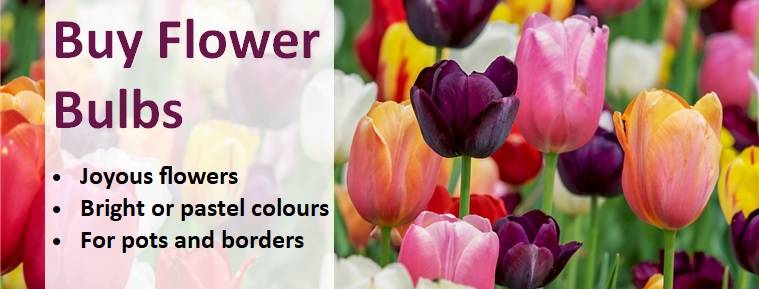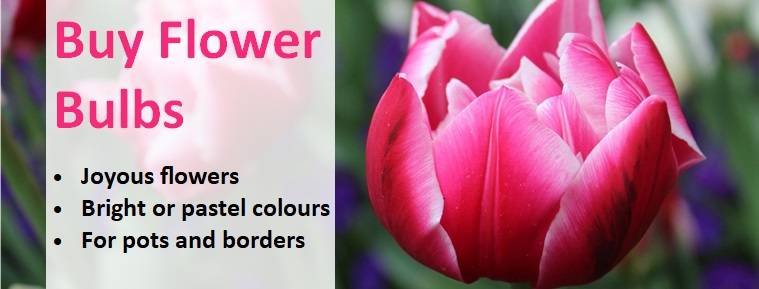Check Here Before Buying – Pot Size Matters...Not all websites offer the same. Plants in a 2-litre pot have twice the root system of a P9 or 1 litre pot.
Different Types of Flower Bulbs
Most people use the word “bulb” to refer to any plant that stores nutrients and energy in an underground storage structure at the end of the growing season, allowing it to spring back into life after winter when the next growing season comes around.
In this short guide we explain the difference between:
- Spring Flowering Bulbs vs. Summer Flowering Bulbs; and
- True Bulbs vs. Corms vs. Tubers vs. Tuberous Roots vs. Rhizomes vs. Fleshy Roots
Spring Flowering Bulbs vs. Summer Flowering Bulbs
- Spring Bulbs – also known as hardy bulbs, spring bulbs are planted in the autumn, spend the winter in the ground and flower in the spring. Exact planting time varies between September and November, depending on the variety. Their protective scales and “tunic” skin protects them from cold temperatures and frost through the winter, before bursting into bloom as the soil starts to warm up at the beginning of spring. Popular types include crocus, daffodils, tulips, irises, hyacinth and allium.
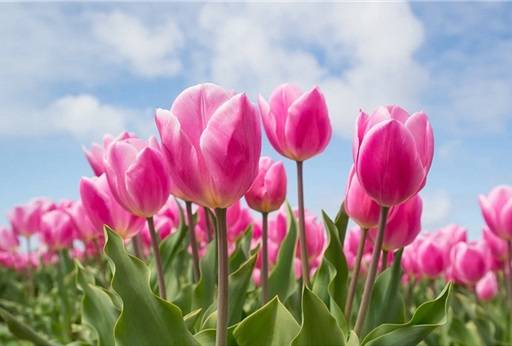
- Summer bulbs – also known as tender bulbs, summer bulbs are planted in spring when the risk of frost has passed and when the soil is beginning to warm up. They’ll flower through the summer and often into autumn. Summer bulbs require a minimum temperature of 13 degrees Celsius before they’ll start to grow. Avoid planting summer bulbs too early when it’s still cold and excessively wet, otherwise they may rot. Some popular types of summer bulbs are lilies, dahlias, gladioli, caladiums and elephant ears.
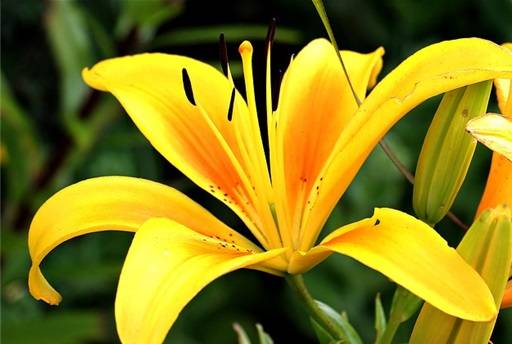
Bear in mind that not all summer flowering bulbs are fully hardy, so bulbs such as Gladioli may need to be lifted out of the ground and stored over winter before the first frosts arrive.
True Bulbs vs. Corms vs. Tubers vs. Tuberous Roots vs. Rhizomes vs. Fleshy Roots
True Bulbs
- True bulbs have 5 key parts:
- Basal plate – bottom of the bulbs where the roots will grow
- Fleshy scales – the main storage tissue for conserving nutrients and energy
- Tunic – the smooth, skin-like covering that protects the fleshy scales
- Shoot – comprising the leaf buds and developing flower
- Lateral buds – small, baby bulbs that will develop into what we call bulblets or offsets.
- True bulbs can be split into two types: (a) tunicate bulbs; and (b) imbricate bulbs:
(a) Tunicate bulbs have a “tunic” or papery covering that prevents the scales from drying out and protects the bulb if it is knocked or bumped. Some examples of tunicate bulbs are alliums (ornamental onions), daffodils, tulips and hyacinths.
(b) Imbricate bulbs do not have this papery covering to protect the leaves, meaning they have to be kept constantly moist before planting to prevent the scales from drying out. The most common example of imbricate bulbs is lily flowers.
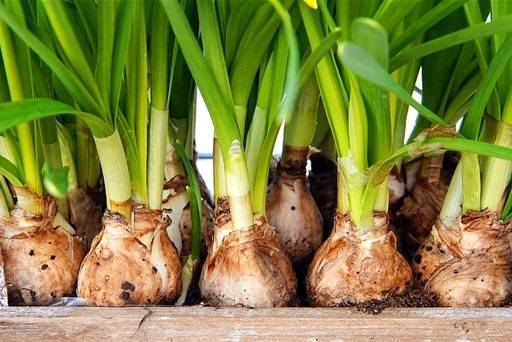
Note: Some bulbs like daffodils develop new “baby” bulbs around the original bulbs, technically called bulblets or offsets. These develop from the base of the original bulb and can develop into new plants. Bulbs that become over-crowded by bulblets or offsets become less productive – if this starts to happen for bulbs that have been in the ground for a while, you know it’s time to lift and divide your bulbs, breaking off the “baby” bulbs and planting the best ones into new spots of the garden.
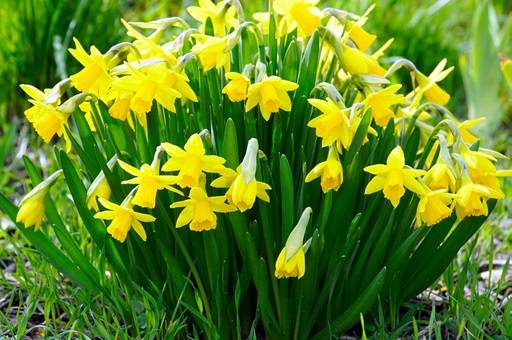
Corms
- Corms are swollen stems at the base of plants which are modified into a mass of storage tissue. One way to tell corms apart from bulbs is that they do not have storage rings when cut in half.
- Corms contain a basal plate (bottom of corm from where roots will develop), growing point and thin tunic skin. Crocus and gladiolus are two examples of “bulbs” that are technically corms.
- In the same way that bulbs have bulblets or offsets, corms may develop cormels, which are pea-sized baby corms that develop around the top of the old corm.
- When a cormel develops into a corm, it can be cleaned up and the old stem removed. The growing point of the new corm should become clear. Cormels can be saved and replanted to help them continue to develop and reach flowering size.
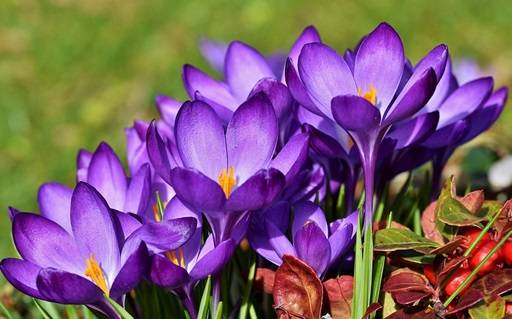
Tubers
- Tubers differ from true bulbs and corms in that they do not have a basal plate from which roots develop, nor do they have a protective tunic skin covering.
- Tubers have buds scattered over the surface of the tuber from which roots and shoots develop.
- Thinking of a common potato is the easiest way to understand what a tuber is – potatoes are one type of tuber plant. Other examples include anemones, caladiums and oxalis.
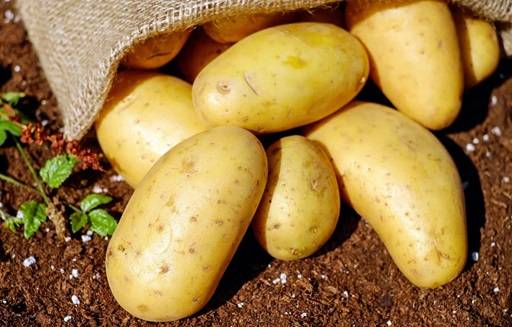
Tuberous Roots
- Tuberous roots are different again because they store nutrients in the actual root, rather than inside an enlarged stem.
- Dahlias are a well known example, producing buds at the top of the root or base of the stem.
- Tuberous roots should be divided at planting time, rather than after lifting. When planting, divide the roots into sections with an eye bearing portion of the stem left on each section.
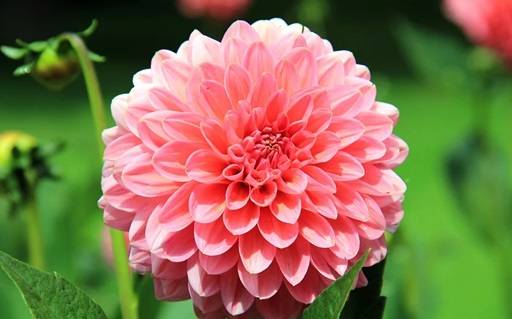
Rhizomes
- Rhizomes are horizontal underground stems, perhaps most commonly associated with running bamboo plants, which may spread aggressively and sprout up new shoots 30-45cm away from the original plant if not suitably contained via a root barrier or root pruning.
- Rhizomes grow horizontally under the surface of the soil, giving them their invasive habit. After spreading horizontally, rhizomes form “pips” that develop into new plants.
Fleshy Roots
- Finally, plants with fleshy roots store nutrient reserves in these fleshy roots themselves.
- Examples include peonies and daylilies (hemerocallis). Both can be propagated by lifting and dividing in the autumn, leaving at least three crown buds on each divided piece.
- Hemerocallis has a fleshy root system – some varieties might be considered a rhizome. They are robust, reliable and bold perennials producing a generous display of lily-like flowers in fiery shades of yellow, burgundy-reds and oranges throughout the summer.
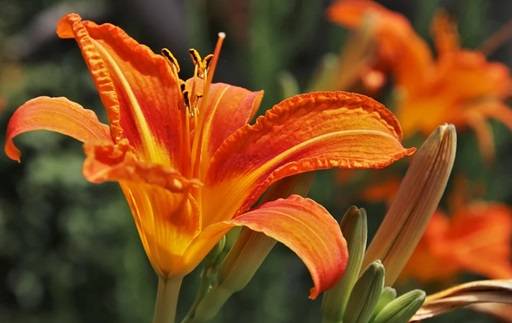
Share this page:

